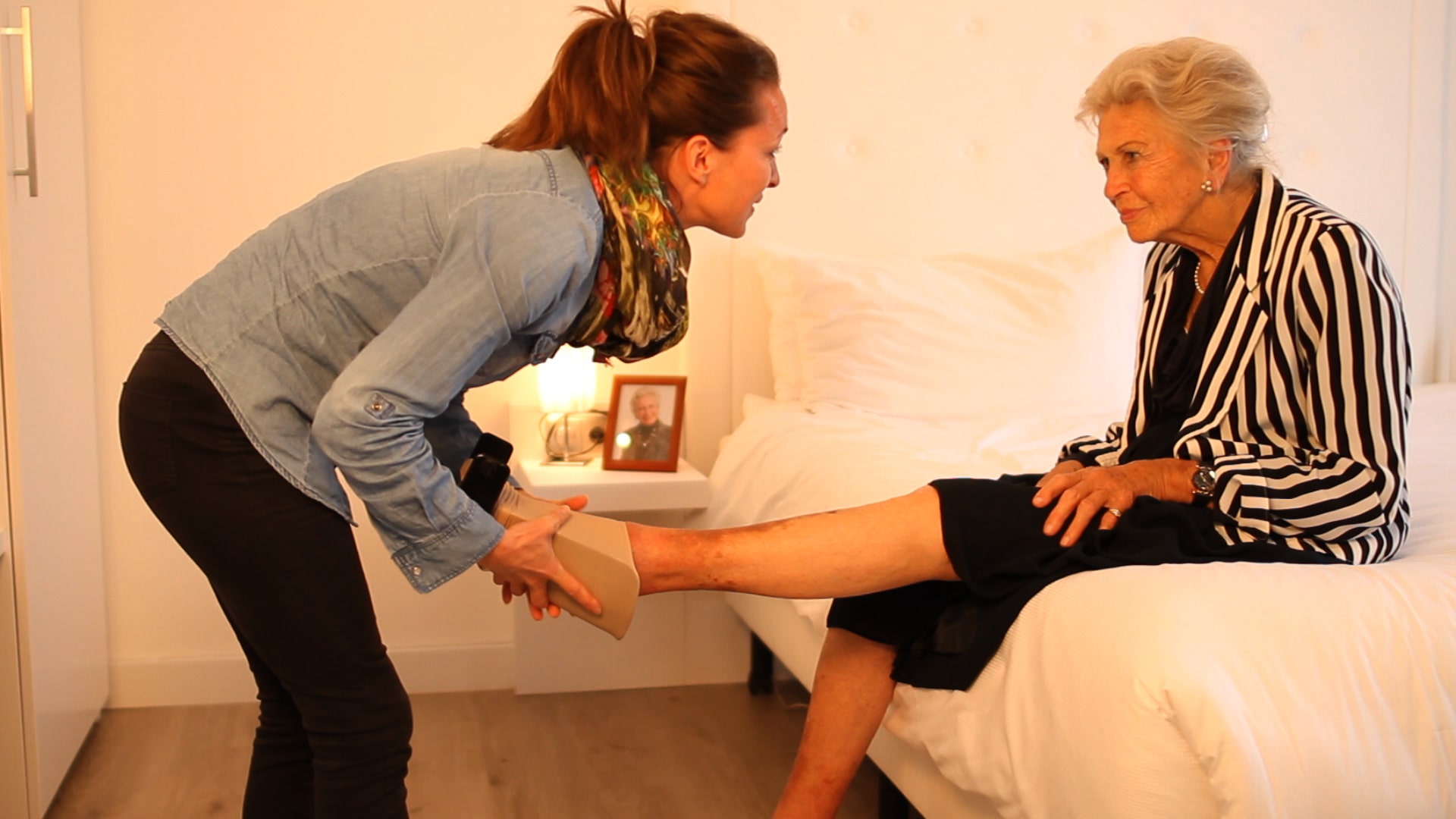![]() 30 days returns
30 days returns
![]() We offer free extended warranty
We offer free extended warranty
![]() more than 250000 satisfied users
more than 250000 satisfied users

Putting on compression stockings on someone else: help for caregivers
Informal caregivers and home care employees are responsible for a wide range of tasks of caring, nursing and guiding nature. Putting on and taking off compression stockings is one of the tasks that is discussed with great regularity, but is often experienced as a taxing act that can cause hand and back problems. This increases the risk of overloading the caregiver, is something that should of course be limited as much as possible.
Importance of compression stockings
Compression or support stockings offer relief for a large number of physical complaints and medical indications. Think for example of heavy legs, varicose veins, thick ankles and thrombosis. Various factors can cause these complaints, but the bottom line is that the pressure in the blood vessels increases and the blood containing fluids and waste products is not adequately drained. With the help of a compression stocking, pressure is exerted on the leg (or arm) from the outside, which stimulates blood circulation and thereby also the drainage of blood and lymphatic fluid.
Tips for putting on compression stockings on someone else
Since the compression stocking has to exert considerable pressure on the leg (or arm), this automatically means that the stocking is very tight around the body and can therefore be difficult to put on. It is important that the support stockings are put on before standing up, so that the leg is still as thin as possible. Make sure that the client can assume an active sitting position, with his or her knees at a 90˚ angle. In addition, ensure an active sitting position yourself and work symmetrically and close to the body. In addition, it is highly recommended to wear grip gloves, in order to maximize the grip on the stocking. These gloves have a non-slip layer which protects the stockings from damage by nails or jewelry, but in particular promotes pressure retention in the stocking as there is less need to pull heavily on the stocking anymore.
Aids for informal home care
In addition to the grip gloves, more tools have been developed that are extremely suitable for use by healthcare workers. Think for example of the Steve Glide Dolphin and the Steve Glide Clipper, both so-called sliding bag solutions. Both aids are made of ultra-strong and very smooth material and work pretty much the same way. Steve Glide Dolphin can be used for open toe stockings and the Steve Glide Clipper for both closed and open toe stockings. So how exactly do these tools work?
Ask your client to place his or her leg in your lap so that you can place the foot and leg in the donning aid. Then pull the stocking over the device and stop when you feel resistance. Then rub your hands back and forth until both the foot and ankle of the stocking are in the right place. You can remove the Steve Glide Dolphin by pulling it out from under the stocking by means of the loop at the toes. The Steve Glide Clipper is removed by pulling it up and out of the stocking.
If you are looking for a donning aid that offers an even greater degree of support when putting on and taking off support stockings on someone else, the Steve EasyON is the right choice for you. When using this donning aid, you install the stocking over the black shaft and then effortlessly place the stocking around the leg of your client. When used by a caregiver, we recommend taking the aid one size larger than when using the Steve EasyON independently. This way you have a little more work space. In combination with the Steve Ring OFF, you can also comfortably remove the stocking from the care recipient.
In addition, both the Steve EasyON and the Steve Ring OFF can be disinfected and can therefore be used for multiple clients.
Do you need help?
Join the Steve Originals® Club
Be the first to know about new products, events and special offers.











 FAQ
FAQ